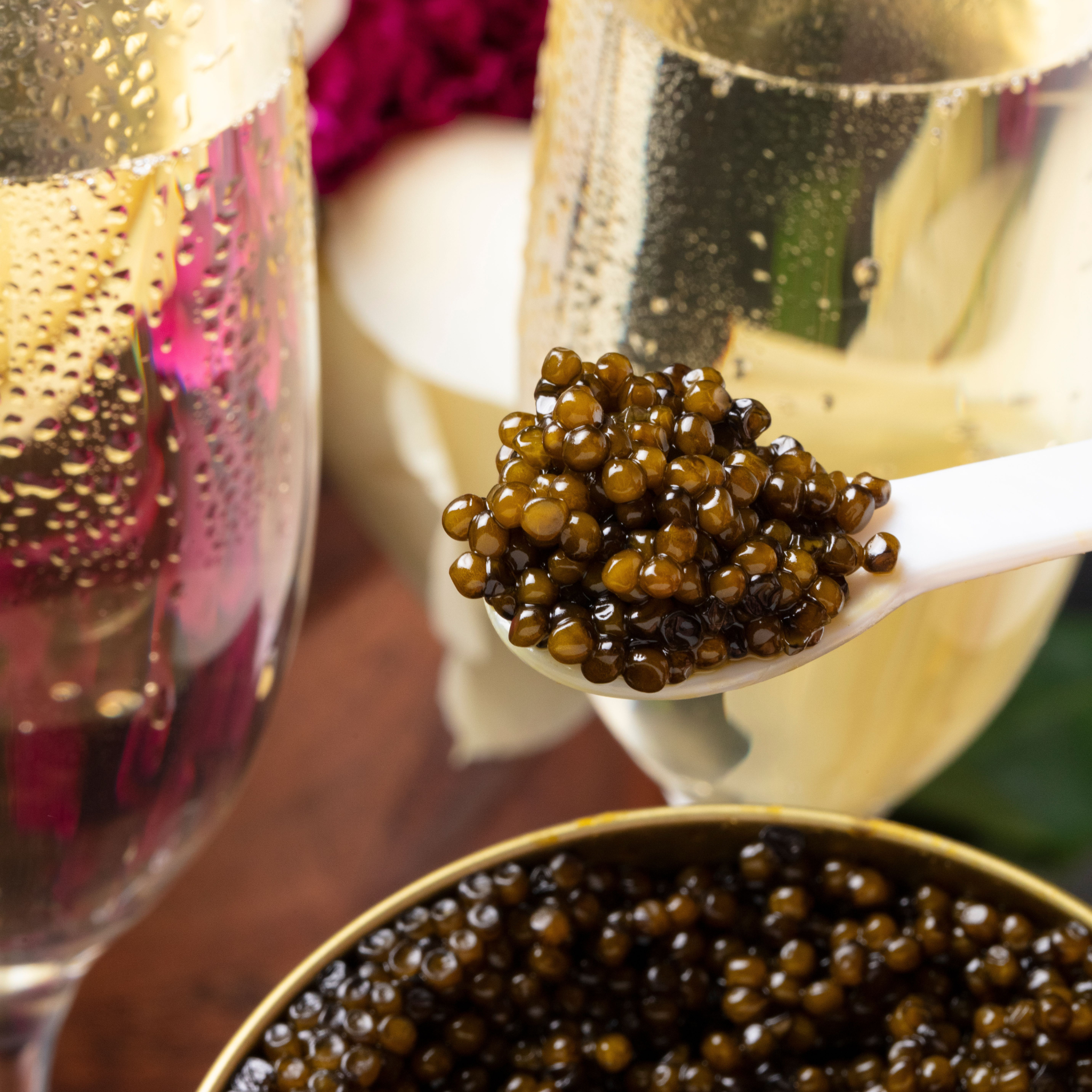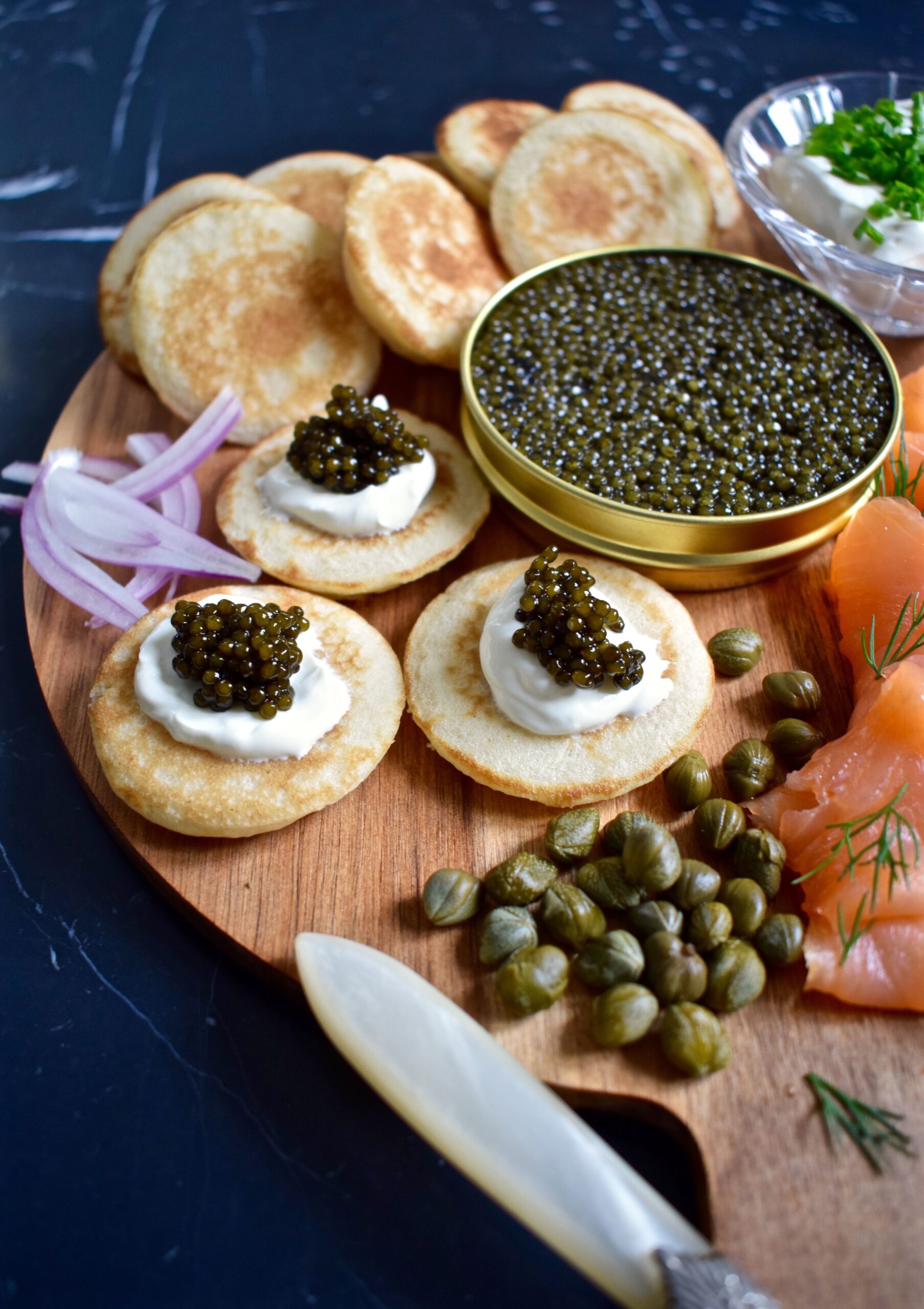
Caviar is one of the most well known delicacies in the world, but what exactly is caviar? These small fish eggs are extracted from female sturgeon fish and then washed and cured in salt. The reason behind the steep price tag caviar holds lies within the rarity of the fish it is procured from. As mentioned earlier, caviar comes from the female sturgeon fish, and although there are around 27 species of the sturgeon fish, they are currently endangered, making them a protected species of fish. The rarity of the fish combined with the high demand for caviar is what makes it so expensive, while the taste is what makes it such a delicacy.
Caviar not only elevates dishes by adding a luxurious flavor to it, caviar is also rich in Selenium and omega-3 fatty acids which are essential to one’s health. Along with this, caviar also boasts a wide variety of essential micronutrients that include: Vitamin A, Vitamin B12, Potassium, Magnesium, Calcium, Vitamin E, Iron, and Zinc. These health benefits of caviar combined with the delectable taste make it more desired among people everywhere.
How to store and eat caviar
Caviar should always be chilled before serving, and needs to be stored in the refrigerator between -2 to 2 degrees Celsius. In terms of shelf life, caviar can be stored in the refrigerator for around 3 weeks if unopened, and should be consumed within 48 hours after it has been opened.
When you’re ready to eat the caviar, take it out from the refrigerator, and use a coin to twist open the cap of the caviar. Once opened, you should always observe your caviar; the caviar’s color can range from a light to dark brown, or even sometimes a gold color. Along with observing the color of the caviar, you should also look to make sure that the caviar is firm and in one piece, caviar should never come smashed or squished.

After your observation, it’s time to taste the caviar. Use a mother of pearl spoon to scoop the caviar onto the back of your hand in between your thumb and index finger. We use a mother of pearl spoon to make sure that the spoon does not alter the flavor of the caviar. The flavor of caviar is very delicate, and a metal spoon will give the caviar a metallic taste which we do not want; a mother of pearl spoon allows one to enjoy the natural flavor of the caviar. The taste of the caviar using a mother of pearl spoon should be rich, buttery, and slightly salty, but not overly salty. After assessing the flavor of your caviar, you can begin to pair it with other items to further explore what tastes caviar has to offer. Here is a simple recipe you can start with while experimenting with that caviar.
The Health Benefits of Caviar
1. Improves Skin Health
The omega-3 fatty acids in caviar can improve skin quality. DHA from caviar produces an anti-inflammatory effect which aids in skin health and can also restore the natural firmness to your skin. Along with this, it also promotes the production of collagen, which greatly reduces skin aging. A 2020 study showed that “caviar extract and its constituent DHA in skin anti-aging, showing that it could have potential as a functional cosmetic ingredient”.
2. Anti-cancer Effect
As mentioned above, caviar also contains selenium. Selenium is shown to have properties that prevent the growth of cancer cells. They get rid of toxins and other harmful substances in your body. Along with this, selenium also has antioxidant properties which aids against premature aging, heart disease, and cancer.
3.Improves Heart Health
The omega-3 fatty acids also aid with heart health. These acids may reduce inflammation in one’s body. Inflammation is what causes damage to the blood vessels, which can lead to heart disease, strokes, and other issues with the heart.
These are only a few of the many health benefits that caviar brings to the table. These reasons, along with the luxurious taste, makes caviar a delicacy that is desired by many. At Kai Wagyu, we have a selection of high quality caviar, along with everything you need in order to give you the best experience. Our Premier Selection Kaluga Reserve Caviar is the signature selection from KAIVIAR. The pearls are large and firm, with a natural golden shimmering tone and a creamy, buttery, rich palate. Our Royal Ossetra Caviar is the most coveted caviar in the world. The pearls are medium to large sized and firm. Beautiful onyx black to soft gold in color with a luxurious smooth texture, robust nutty flavor and buttery finish.










